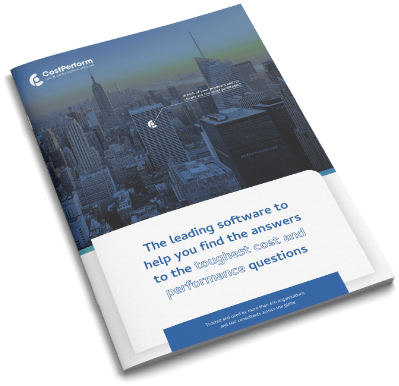Effective capacity planning is a cornerstone for achieving sustainable growth and success in a dynamic and ever-evolving business landscape. At CostPerform, our expert team frequently receives intriguing questions from our client base and the wider business community. One topic that emerges is the intricate world of capacity planning. This detailed article aims to clarify comprehensively examine capacity planning’s intricacies, advantages, and potential pitfalls.
Capacity Planning and Cost Insights
Capacity planning is a crucial business strategy, ensuring efficient operations that align with market demands. It optimizes resources, minimizes costs, and maximizes customer satisfaction. For deeper insights, visit our capacity management page.
A lack of cost understanding can be disastrous in today’s competitive business realm. Cost management software provides crystal-clear financial insights, enabling detailed cost analysis to optimize spending and drive efficiency through cost allocation.
Key Elements of Effective Capacity Planning
Businesses need a sturdy foundation built on several pivotal elements to excel in capacity planning:
- Demand Forecasting: Beyond predictions, it blends data-driven techniques and market insights for robust strategies.
- Monitoring Current Capacity: Regular checks gauge operational prowess, spotlighting efficiencies and improvement areas.
- Evaluating Constraints: Identify roadblocks or operational constraints and devise strategies to overcome them.
- Planning for Contingencies: Businesses need flexible, adaptive plans that can mold to fit an array of scenarios
Strategies for Sustainable Capacity Planning
Carving a path to sustainable growth requires a strategic blend of planning and execution. The first strategy is balancing short-term and long-term goals. While adapting to market fluctuations is crucial, it’s equally vital to maintain focus on the overarching long-term vision, ensuring agility with a solid foundation.
Also, investing in Scalable Technologies amplifies efficiency. Leveraging scalable solutions in the digital age, such as cloud infrastructure and adaptable software, empowers businesses to enhance operations without incurring exponential costs.
Furthermore, diversifying supply chain and distribution channels enhances resilience. A diversified strategy mitigates risks, reducing dependence on a single vendor or distribution avenue and bolstering the capacity for adaptability and growth.
Lastly, prioritizing employee training and skill development is fundamental. The strength of any business lies in its workforce. Investments in continuous training, skill development, and cross-functional exposure create a versatile team capable of meeting evolving challenges head-on.
Tactical Approaches for Effective Capacity Planning
While high-level strategies offer guidance, true success lies in tactical execution. Regular audits and assessments serve as the operational health checkups of organizations, offering a clear view of their current status and pinpointing areas requiring intervention. Embracing data analytics, AI, and advanced metrics in today’s data-rich landscape provides unparalleled insights and predictive capabilities, empowering businesses to stay ahead of the curve. Effective stakeholder communication and collaboration, internally and with external partners, are the linchpins that ensure all facets of the business work harmoniously, promoting smooth operations and aligned objectives.
Challenges in Capacity Planning and Mitigation Measures
Strategies, no matter how robust, come with their set of challenges. Whether these stem from unforeseen external market shifts, internal logistical issues, or technological hiccups, the key lies in anticipation and mitigation. With the right insights, tools, and a proactive mindset, these challenges can transform from potential roadblocks into avenues for innovation and growth.
The Future of Capacity Planning
As we gaze into the future, it’s evident that capacity planning’s horizon is vast and full of potential. The rapid advancements in AI, automation, and data analytics are reshaping how businesses approach capacity planning. Coupled with this, external factors, be they global events, geopolitical shifts, or industry-specific trends, continually redefine market dynamics. In this rapidly evolving scenario, adaptability and continuous learning are the keys to success.
